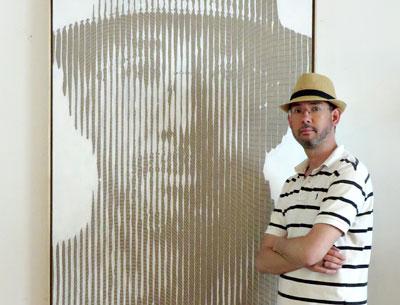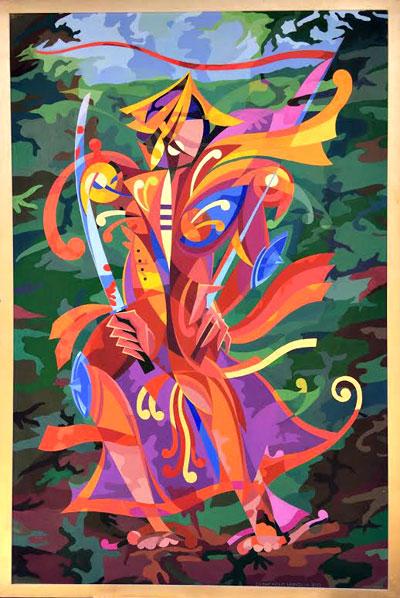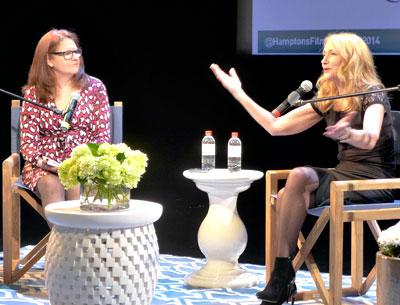The Art Scene: 10.30.14
The Art Scene: 10.30.14
New Shows at Halsey Mckay
Halsey Mckay has opened two new shows at its East Hampton gallery space. One, “Inversion Spectrum,” is a solo show of works by Corey Escoto, who uses both analog and digital processes in photography to tease the viewer into figuring out which is which, where the origin of each image lies, and how photography has adapted to contain all of the available technology.
David Kennedy Cutler, Ethan Greenbaum, Mariah Robertson, and Letha Wilson combine forces for “Surface Artificial Matter,” which also deals with the changing nature of photography as a medium, whether as an end in itself or the basis for the exploration of other mediums such as sculpture.
Both exhibitions will be on view through Nov. 16.
Wallace on View in N.Y.C.
On a separate but related note, Ryan Wallace, one of the partners in Halsey Mckay, is showing his own work at Susan Inglett’s gallery in Chelsea through Dec. 6.
Mr. Wallace’s reliefs mine abstraction’s technical and formal properties. The results are explorations of texture, light, and surface tension in a “chromatically minimalist” palette. In his stacked-cube sculptures, he harnesses both Minimalism and Expressionism, “incorporating elements that cannot function in two-dimensional space.”
Incorporating influences from predecessors such as Carl Andre, Sol LeWitt, and Bruce Naumann, the Pollock-Krasner Foundation grant recipient ultimately allows painting and sculpture to co-exist in one piece, sharing a similar language and material.
Bartley Talk
Mary Ellen Bartley will take viewers through her photography exhibition “Leaning Above the Page” at Guild Hall in East Hampton on Saturday at 2 p.m. The artist won top honors at the 2012 Artists Members Exhibition from Lilly Wei, an independent curator, essayist, and critic for Art in America. The talk is free with admission.
Abstraction at Ille
Amagansett’s Ille Arts will open “Life in the Abstract” tomorrow, with a reception Saturday from 5 to 8 p.m.
John Haubrich, Barbara Groot, and Dru Frederick have been brought together for this exhibition by Ms. Groot, who serves as curator. She found consistency in their interpretation of abstract art, rooted in the design background of each. She was a textile designer; Mr. Haubrich is an art director, and Ms. Frederick has worked in art restoration and conservation. How they explore the elements of composition such as mass, geometry, line, and color, is a major theme.
The exhibition will remain on view through Nov. 10.
Speaking of Murals
Jane Weissman, an artist and author, will present “Protest and Celebration: Community Murals in NYC” at the Montauk Library on Sunday at 3:30 p.m. The free slide lecture will look at collaborations between artists and neighborhood groups to beautify the cityscape. The artist, who is also a muralist, was the co-author of “On the Wall: Four Decades of Community Murals in New York City.”
Poetics of Space
Tripoli Gallery in Southampton will open the show “Poetics of Space” on Saturday with a reception from 5 to 7 p.m. The exhibition will feature work by Jonathan Beer and Michael Chiarello.
Mr. Chiarello, who lives and works in East Hampton, makes sculptures out of steel that are open and welcoming. Mr. Beer paints both abstractly and realistically within the same canvas.
The work of both artists, whose different yet kindred spatial concerns balance each other aesthetically, according to the gallery, will be on view through Nov. 24.
Bateman’s Abstractions
Roisin Bateman’s moody and colorful abstractions will be on view at Peter Marcelle Project in Southampton beginning Saturday, with a reception from 6 to 8 p.m.
Based in Sag Harbor for the past 25 years, Ms. Bateman actually hails from western Ireland; she attended art school in Belfast. Her early impression of that country’s landscape, particularly of rocky terrain and the sea as well as the soft light, were translated into the same components on the East End. They come to fruition in abstraction that breaks the elements down to their essence and manages to evoke much more than their surface would at first indicate.
After the opening, the gallery will be open “by chance or appointment.” The show will remain on view through Nov. 16.
Michele Stuart in Manhattan
An exhibition of Michelle Stuart’s work called “Silent Movies” will be on view at the Leslie Tonkonow gallery in Chelsea from Saturday through Dec. 2.
An early practitioner of a 1960s genre known as “land art,” Ms. Stuart’s artistic practice has grown to include multi-paneled works incorporating photography, wax, plant life, and other mediums, primarily in an eclectic and allusive grid-format.



